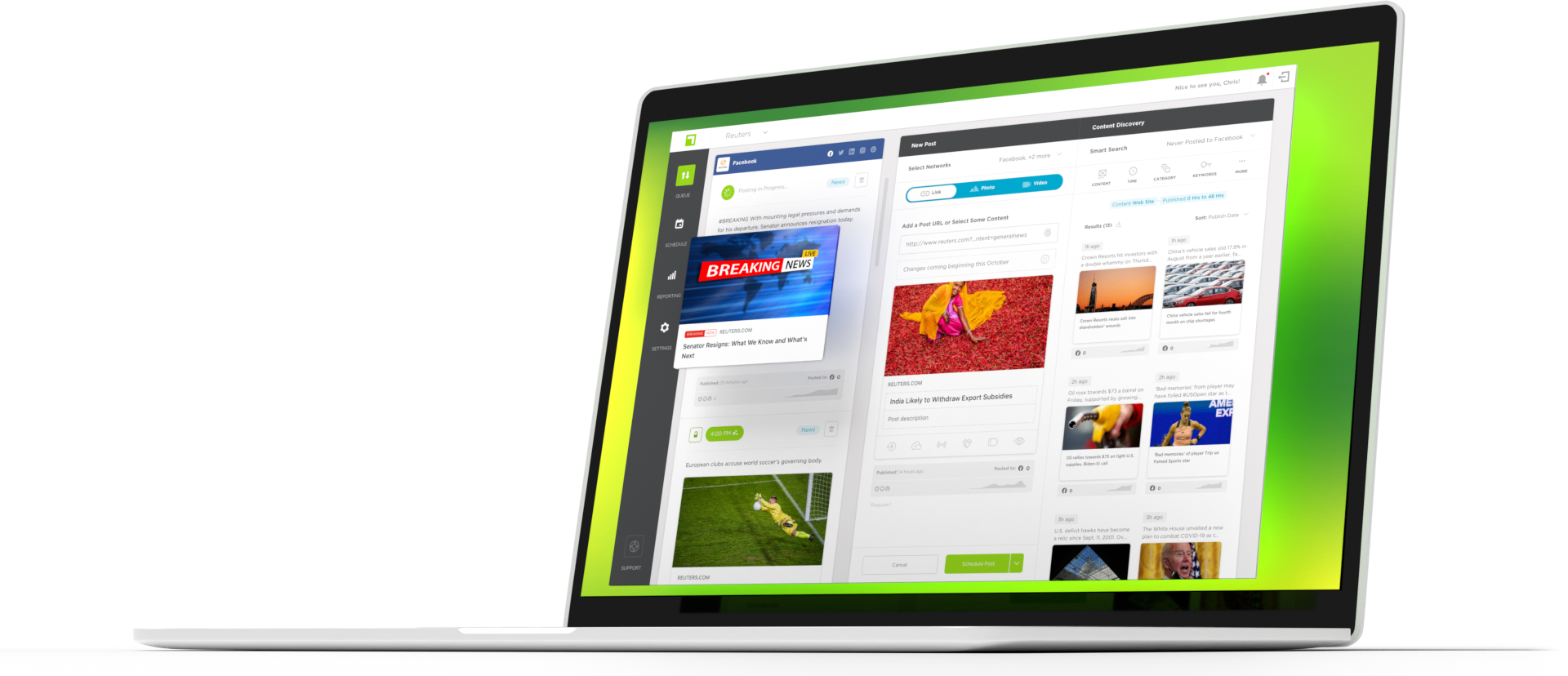They say in social media that the only constant is change. Even long held best practices can experience a pivot. At True Anthem, we believe in the power of recirculating content to maximize the performance of your content, and we offer customers the ability to adjust how long our platform has to wait until an article is eligible to recirculate.
Since we have long recommended waiting at least 28+ days between posts for evergreen content on Facebook, we wanted to test our own best practices around recirculation windows by conducting a performance analysis to see if they were still true!
Analysis Methodology
We are super methodical, so here is how we approached this analysis.
- We reviewed the performance of 980K Facebook posts of recirculated content. (The article had to have been previously promoted on Facebook to be considered.)
- We analyzed all customers regardless of their vertical (ie. National News, Local News, Online Media Magazines, or Sports).
- We used one year’s worth of posts—specifically between July 5, 2023, and July 5, 2024—to ensure a wide enough span of time for viral posts to be offset by other posts.
- Only link posts were analyzed.
- Evergreen content was defined by our EPS (Evergreen Prediction Score) to have consistency across customers.
- The analysis included posts from all sources (e.g., AI-scheduled posts, manually scheduled posts, and native posts).
- Our analysis of recirculated content focuses on impression performance since CTR will vary wildly depending on each publisher’s content strategy.
Interpreting the Results
We grouped the posts that qualified for the analysis into different ranges of recirculation windows (ie. was there 0-2 hours or 3+ months between the Facebook posts of that article etc). We then measured those ranges through two lenses:
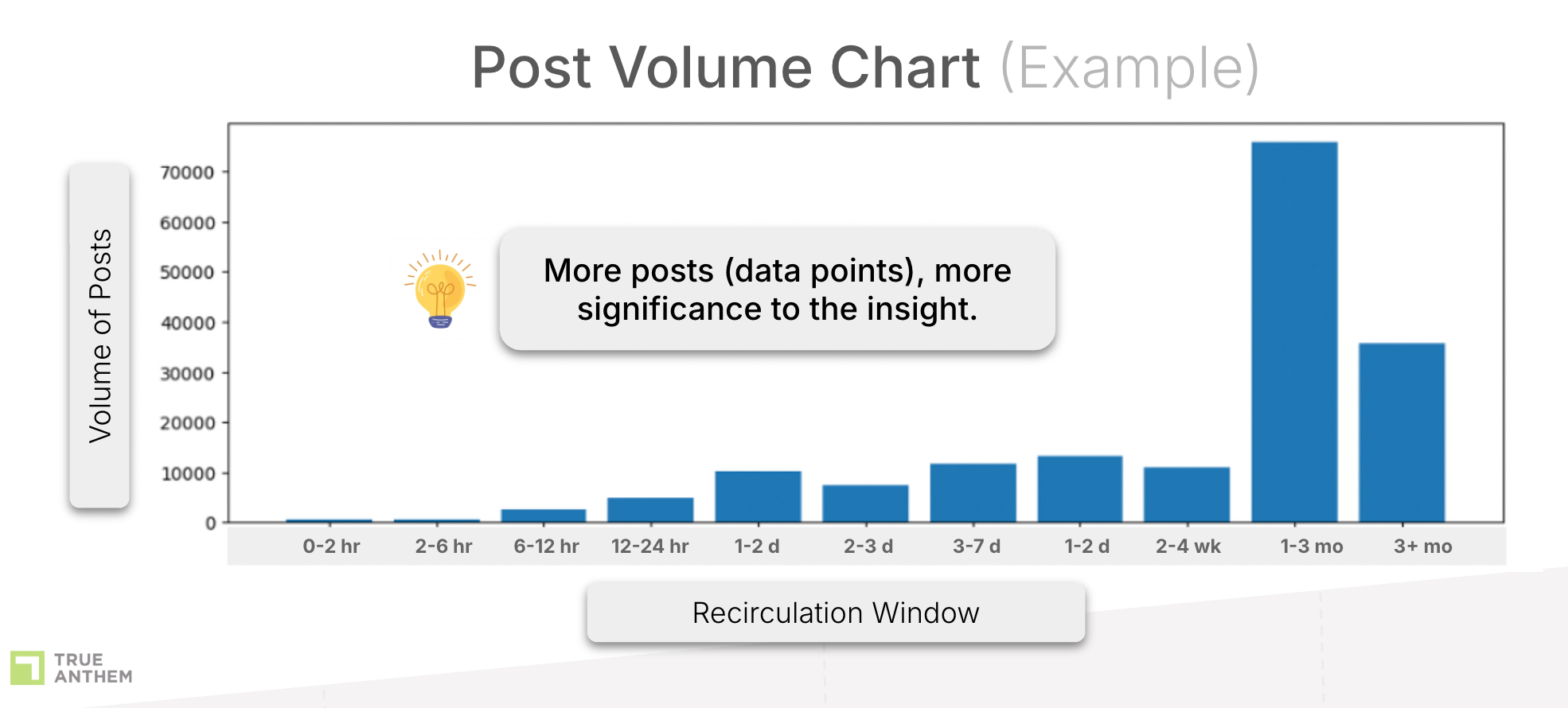
To accurately assess the relevancy of content, we require at least several hundred posts to ensure that the impressions data we gather is statistically significant.
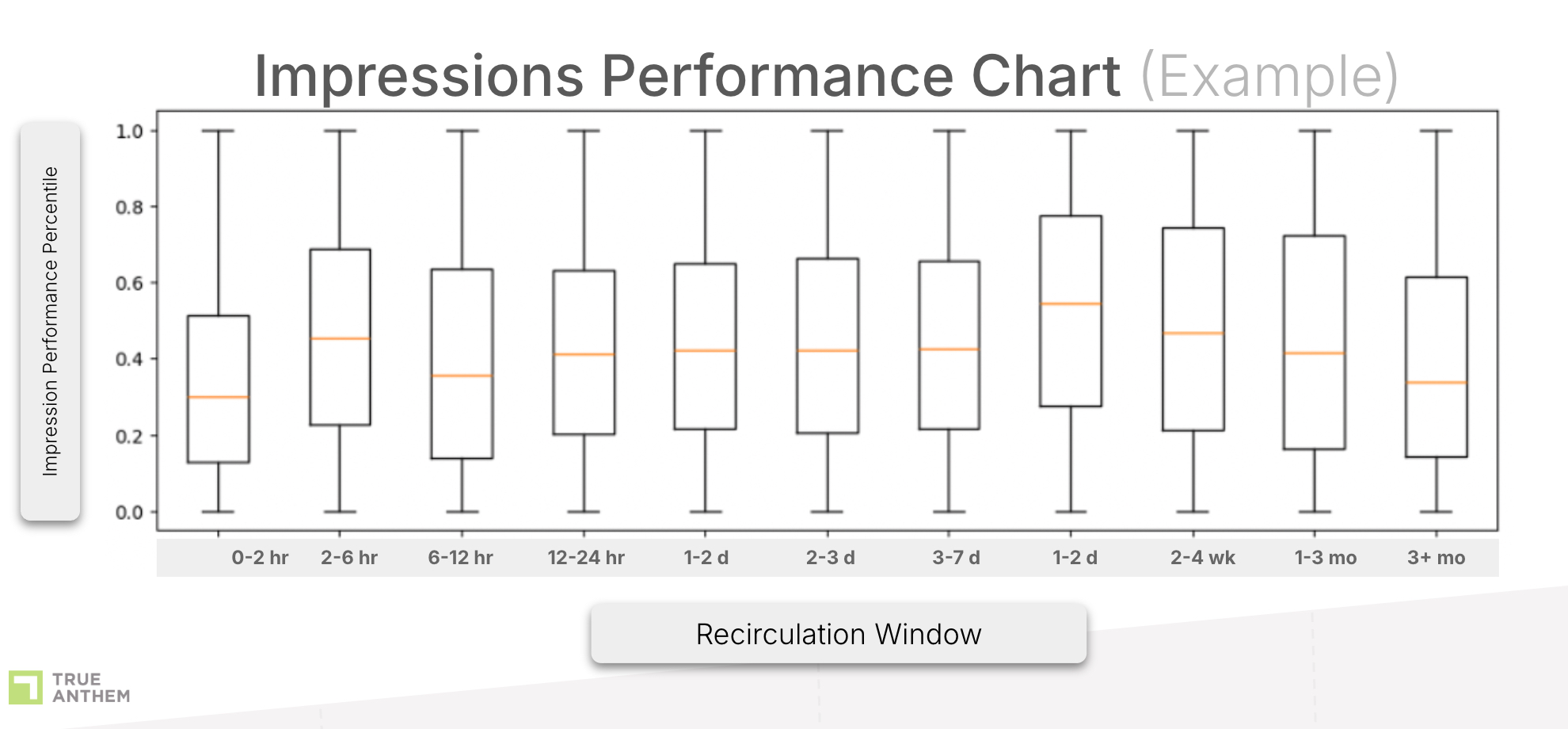
Post performance is measured based on impressions, which are assessed on a percentile. The position of the box on the recirculation window line indicates the effectiveness of those posts—the higher the box, the better the performance. Furthermore, if the bottom of the box is also higher on the chart, it signifies that a greater number of posts have consistently had high performance.
When a recirculation window has a high median on the impressions percentile AND a statistically significant number of posts associated with it, it means it is overperforming and should be considered for your post strategy!
All Customers – Evergreen Recirculation Window Insights
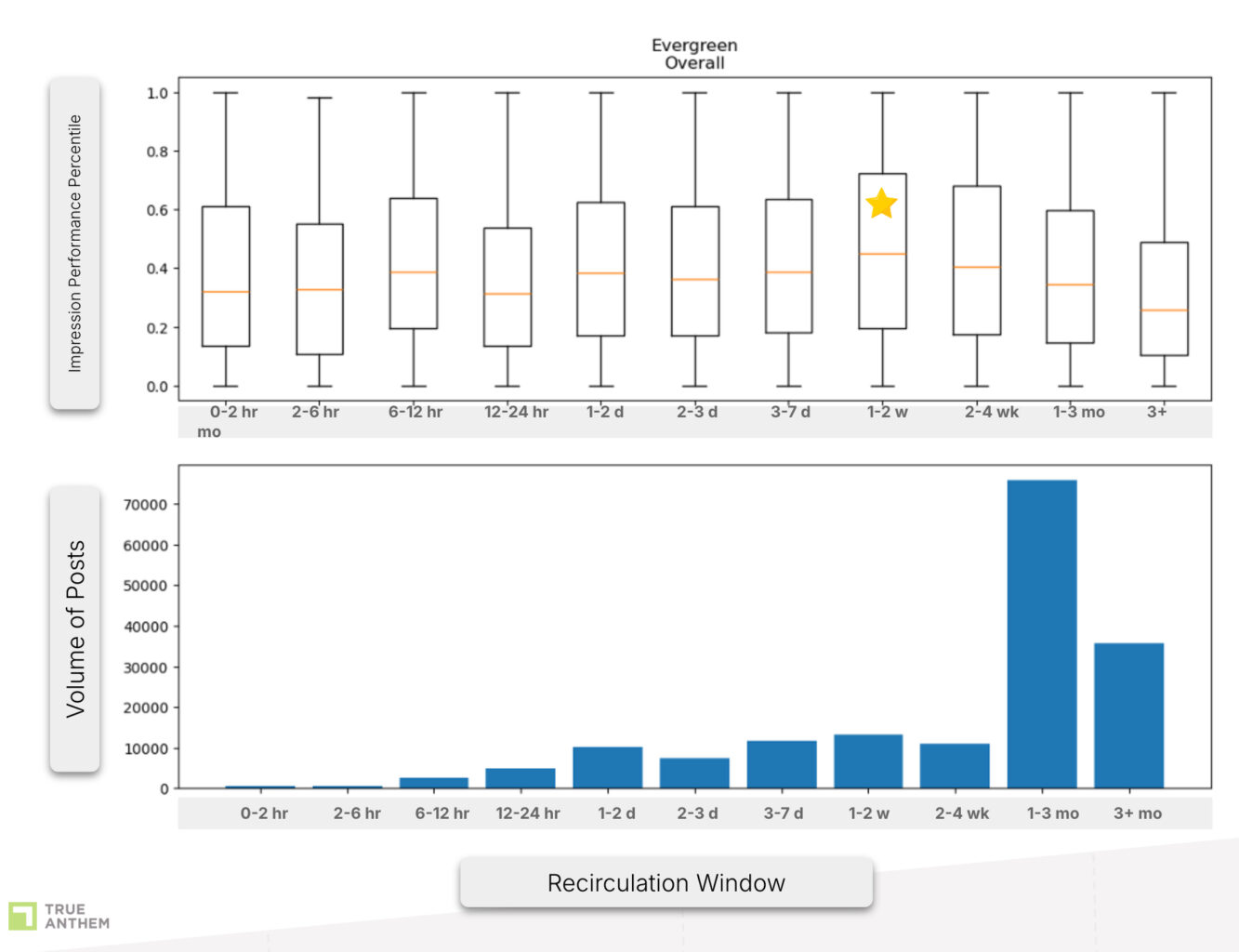
We’re seeing that 1-2 weeks is the most effective recirculation window for evergreen content.
The majority of evergreen content across customers has a minimum recirculation window of one month, which actually shows low potential for impressions compared to the other duration windows. We find this revelation exciting because it means the best practice has indeed changed!
All Customers – Non-Evergreen Recirculation Window Insights
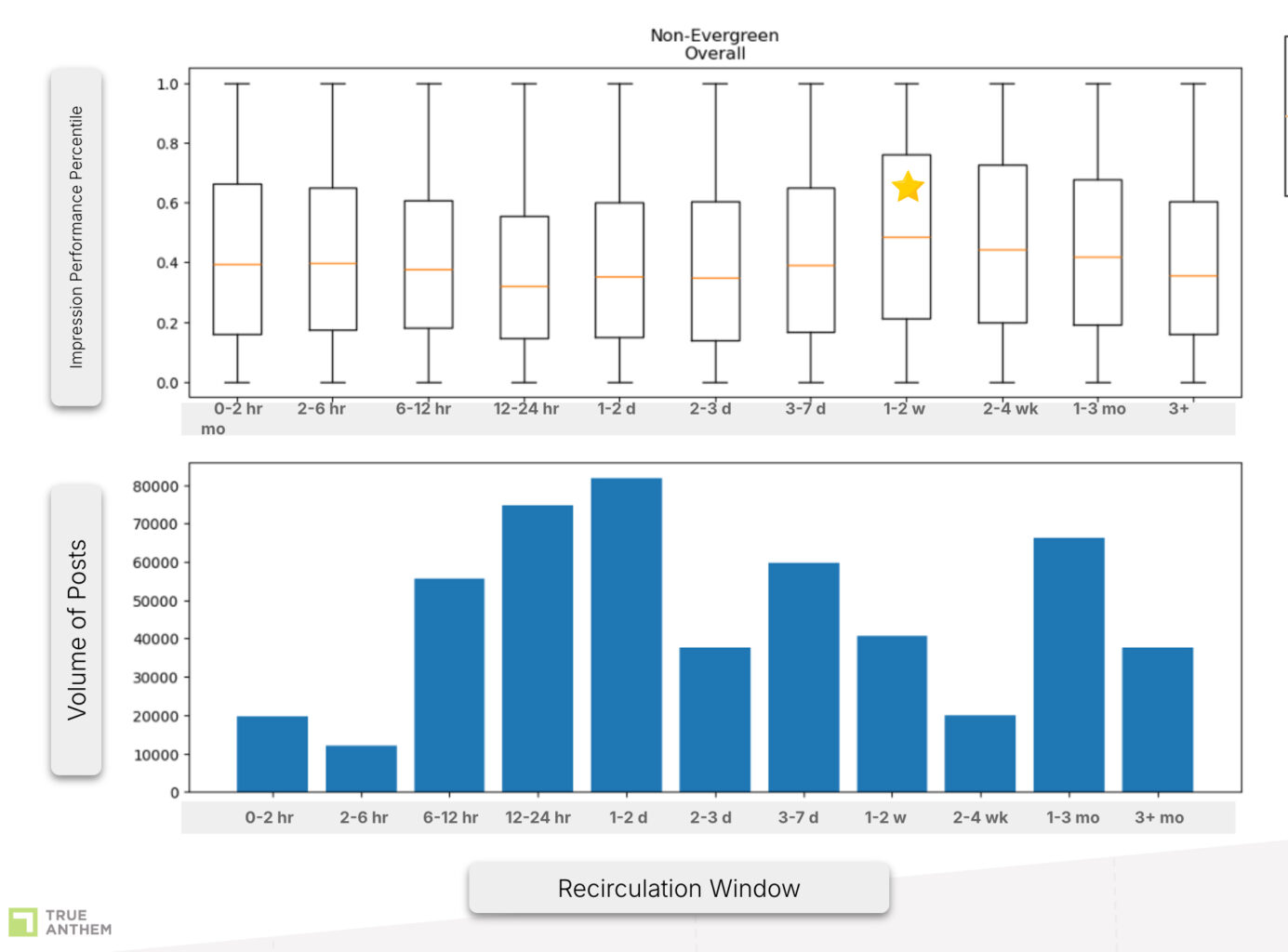
The 1-2 week window stands out for non-evergreen content as well.
Furthermore, 12-24 hours is the second most frequent recirculation window for non-evergreen content, but the lowest performing.
Balancing Data Insights with Editorial Judgment
Ultimately, editorial knowledge and understanding of the content’s relevance should override raw data summaries. Always prioritize the context and timeliness, ensuring it aligns with your audience’s interests and needs.
Recirculating irrelevant content can diminish audience engagement and harm your brand’s credibility. Strategic recirculation is about striking the right balance between data insights and editorial expertise.
Reviewing your social media strategy? Reach out to True Anthem today for a free demo.
Ashley Carufel is the Director of Customer Social Strategy & Insights for True Anthem. She has over a decade of experience in social strategy, and previously worked at PBS, Dotdash Meredith and Shutterstock.

